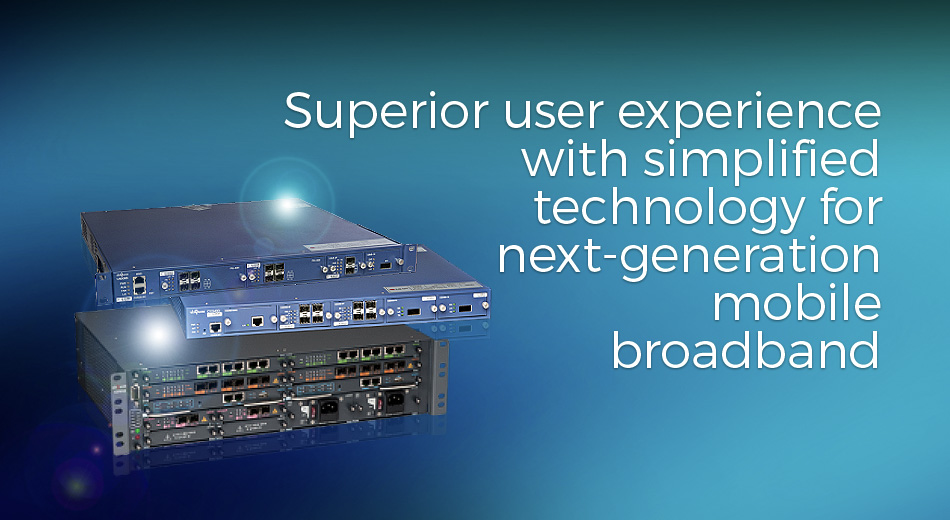LTE BACKHAUL
OUR COMPANY HAS A DREAM AND VISION OF ALL IP CONVERGENCE
 LTE is the next step in the technical evolution of 2G/3G networks. It offers superior user experience with simplified technology for the next-generation mobile broadband. The mobile broadband market is rapidly increasing with the growing popularity of smart phones, tablets, high performance application media contents and cloud services.
LTE is the next step in the technical evolution of 2G/3G networks. It offers superior user experience with simplified technology for the next-generation mobile broadband. The mobile broadband market is rapidly increasing with the growing popularity of smart phones, tablets, high performance application media contents and cloud services.
Skyrocketing traffic volumes and impending 4G/LTE initiatives are creating challenges in network engineering and infrastructure expenses which are driving service providers to evolve their network architectures. Mobile service providers are developing their infrastructures to accommodate new high-bandwidth services and support the increasing traffic demands.
Mobile operators and backhaul transport providers are adopting IP/Ethernet backhaul as the default technology choice to cost effectively scale instead of relying on TDM-based transport networks for LTE backhaul. Due to the fact that 2G and 3G networks have a wider area coverage than LTE, operators plan to deploy microcells, picocells, and femtocells (small cells) in buildings and homes to cover the gaps. The backhaul for these small cells are mostly over the wireline networks rather than the existing macrocell backhaul.
The biggest challenge for mobile network operators is to arrange for small cell traffic to be sent back to the mobile core and mobile packet core. The operators work with building and wireline facilities, then setup the logical pathways back to the LTE core network.
Mobile Backhaul Switches
The ubiQuoss mobile backhaul solutions are suited to meet the operator’s business objectives and subscriber expectations. The ubiQuoss mobile backhaul solutions, with its layer 2 architecture, provide significant financial and operational advantages over a more complex layer 3 architecture. While offering high scalability, availability and serviceability, layer 2 transport architecture enables service providers to deliver highly available services that are better-suited for delay-sensitive mobile applications such as interactive VoIP and video. Additionally, ubiQuoss offers a wide range of backhaul solutions including Picocell aggregation and LTE backhaul switches.
Backhaul Switch is a Carrier Ethernet switching platform that delivers high efficiency IP based packet traffic, which is typically placed at eNB sites as a DU (Digital Unit) device. It can provide Pseudo Wire Emulation service for TDM traffic, offering legacy data services over IP based network for business service as well as 2G or 3G mobile backhaul infrastructure.
Carrier Ethernet switching platform
[Multi-node ring structure]
The CS3400 has a Multi-node ring structure for up to 8 units which creates a highly manageable and reliable ring architecture that is protected based upon the G.8032 Ethernet Ring Protection Service protocol. It supports less than 50 ms switch-over so as to achieve the high resilience requirement of industry. The CS3400 supports IEEE 802.1ag CFM (Connectivity Fault Management) with the Maintenance Domain Level of Provider and Operator. Also, the performance related features defined in ITU Y.1731 are implemented for enhanced manageability.
[Fault and Performance management]
CS3400 supports IEEE 802.1ag CFM (Connectivity Fault Management) with the Maintenance Domain Level of Provider and Operator. Also the performance related features defined in ITU Y.1731 are implemented for better manageability.
[Various types of Interface Module]
According to the customer’s need CS3400 can furnish the best fit interface module card unto the unit, which can be Gigabit Ethernet either in SFP or UTP form, or 10G Ethernet. There are 3 available slots for these modules which can be equipped with any one type of interface module cards homogeneously or with mixed types of cards at the same time.
[Adaptability to Operating network]
According to the type of Metro Ethernet implementation which customers have implemented, CS3400 can adapt itself to provide the required transporting capability. For this purpose CS3400 adopted the prevalent technologies of PB (Providers Backbone, 802.1ad).
[Redundancy of Power module]
Two power modules are redundantly equipped at rear side of the unit which are hot swappable for the sake of higher resilience and system availability.
Features of CS3400
● Max. 1000Base-X (SFP) 16 port or 10/100/1000Base-T 16 port or 10GBase-R (XFP) 4 port
● Max. 4 Interface module, Hot-Swap
- CS3400-4F : 1GE 4port SFP module (1000Base-X)
- CS3400-4T : 1GE 4port Tx module (1000Base-T)
- CS3400-1X : 10GE 1port module
● 128Gbps Switch Fabricm 80Gbps (full-duplex) Non-Blocking Switch Fabric
● 59Mpps Throughput
● 512MB Main Memory
● 256MB Flash Memory
● Up to 16K MAC Address Support for Switching
● Up to 4K VLANs Support
● Y.1731 Fault, Management, Performance Management
● IEEE802.1ag Connectivity Fault Management
● Connectivity Check, Link Trace, Loopback
● IEEE 802.1ad Provider Bridge
● G.8032 Ethernet Ring Protection Switching


 Oversea Sales +82-70-4865-0565
Oversea Sales +82-70-4865-0565